Everyone you will ever meet knows something you don’t.
~ Bill Nye
slip:4a1272.
Everyone you will ever meet knows something you don’t.
~ Bill Nye
slip:4a1272.
What insights can be gained from exploring human movement, physics, and juggling in weightlessness?
Adam Dipert is a Postdoctoral Research Scholar in Physics at North Carolina State University and has wowed audiences as a professional circus performer for nearly twenty years. He started studying human movement in weightlessness in preparation for his first parabolic flight in 2016, and since then he has logged countless hours exploring the frontiers of microgravity flow in pools, aerial harnesses, flotation tanks, wind tunnels, and airplanes. In addition to developing a new suite of dance moves for outer space, he has exercised remarkable restraint not asking NASA for permission to spin fire on the ISS.
And you’ve become only eyes, because you now no longer have a way of sensing where your body is. And not only do you only become eyes, but you’re also experiencing tunnel vision. And so when you enter weightlessness, and start to develop the skills which will be necessary to become a competent movement artist in that environment, you have to first figure out how to re inhabit your body and how to come back from just being eyes and realize that you have a head and find out where your arms are, and have some idea about where your arm is, say when it’s behind your back because, you know, right now on Earth, probably everybody listening to this is on earth, waving your arm. Yeah, you put your arm behind your back and and what is it that tells you where your arm is? It’s the tension in your shoulder, right? It’s the torque in your arm, elbow. It’s a lot of things that are all gravitationally oriented. And so you have to come with a totally new set of skills.
~ Adam Dipert (16:55)
This episode is far out, and far ranging. Adam and I managed to coordinate a recording session with little advanced notice… and then we proceeded to go wide and deep on circus stuff, juggling, physics, mathematics, and movement in weightlessness.
Since I clearly cannot cram the visuals into the audio, you simply must float over to Adam’s web site: TheSpaceJuggler.com
The conversation explores the unique challenges and opportunities of human movement and artistic expression in microgravity. One key topic is the disconnection from conventional proprioception in zero gravity, requiring innovative methods to reorient oneself and move effectively. The discussion also covers the physics of rotations and how understanding moments of inertia can inform both practical and artistic endeavors, like juggling in altered environments.
Another important focus is how altered environments like space could fundamentally change our understanding of what it means to be human. Insights about the adaptability of the human body, new forms of artistic expression, and philosophical reflections on perspective and truth highlight the broader implications of this work. The conversation also touches on the importance of preparing humanity for future space exploration, emphasizing the potential for cultural and intellectual growth through such endeavors.
Takeaways
Human proprioception in weightlessness — The experience of zero gravity requires a complete relearning of body orientation and movement.
Rotational dynamics in microgravity — Understanding how the human body rotates in space helps develop both practical movement skills and new artistic expressions.
Integration of physics and art — Combining physics with creative disciplines like juggling leads to innovative insights and applications.
Space as a proving ground — Microgravity environments challenge and expand human understanding of movement and adaptation.
Embodied cognition and ethics — Exploration of movement in space raises questions about how gravitational experiences shape human cognition and morality.
Philosophical dualities — Weightlessness provides a powerful metaphor for understanding multiple truths from different perspectives.
Preparation for space exploration — Analog environments are essential for developing skills and knowledge before venturing into true microgravity.
Resources
The Space Juggler — Adam’s official website showcasing his projects, videos, and information about space juggling.
MIT Media Lab — A location where Adam has shared insights into his work on microgravity and movement.
Kitsou Dubois — French choreographer and dancer specializing in zero gravity dance.
International Jugglers’ Association — Organization where Adam has showcased his pioneering work in space juggling.
SpaceX — One of the private companies advancing human space exploration discussed in the conversation.
(Written with help from Chat-GPT.)
ɕ
Some people live and act according to their own thoughts, and some according to the thoughts of others; this is a crucial distinction between people.
~ Leo Tolstoy
slip:4a1011.
During the Sept 24th weekend, I’ll once again be recording conversations with community leaders and movement enthusiasts at a retreat in the Cascades outside of Seattle. Follow that link If you’re interested in the nuts-and-bolts of what I do in order to create some conversations. Over there, I’ll be posting replies as the project progresses over the next two weeks. I’ll be showing my work—preparation, packing, gear, field recording, and post-production. I’ll try to cover everything from ideation to the final deliverables.
The first piece of context is, what is the event that I’m attending? It’s an immersive gathering celebrating leadership in parkour. We bring remarkable leaders from the global parkour community together for 4 days of learning, sharing, and play.
The event is a concept which has been held in various locations over the years. It’s near and dear to me both in the sense that I’m into parkour and I’m into podcasting. I’m also leading an interactive session about Creating Better Conversation.
ɕ
What inspires and sustains someone working behind the scenes in podcast production?
This conversation uncovers the struggles and joys of producing creative podcasts with purpose.
The team that I’m working with needs to be cool and needs to be on the same vibe as me, you know? It’s just not worth it to me, at this point, to be forcing myself into a box to work on a certain team.
~ Alexandra DiPalma (3:31)
This conversation explores the personal and professional challenges of working in podcast production. Topics include maintaining inspiration despite the workload, the importance of selecting projects that align with personal values, and the satisfaction of empowering underrepresented voices in the podcasting industry. Insights are shared about prioritizing teamwork and avoiding projects that lack alignment with one’s instincts or mission.
The discussion also touches on collaboration, emphasizing the value of working with peers at similar levels of experience. Alex reflects on how her perspective has shifted over the years, balancing passion with pragmatism, and remaining open to meaningful projects that may not offer immediate financial rewards. The metaphor of an upward spiral is used to illustrate growth and self-awareness, reinforcing themes of connection and the power of thoughtful framing.
Takeaways
Working behind the scenes — Challenges and rewards of producing podcasts as a creative process are explored.
Selecting the right projects — Importance of aligning with a project’s mission and trusting instincts to avoid pitfalls.
Empowering underrepresented voices — Focus on including diverse perspectives both on mic and in production roles.
Collaboration as a strategy — Value of working with peers at similar career stages for mutual growth.
Balancing passion and pragmatism — Navigating personal inspiration while maintaining professional sustainability.
Resources
Domino Sound — A podcast production company focused on amplifying underrepresented voices.
Food for Thought — A podcast hosted by queer, multiracial writers, produced by Domino Sound.
Zen Habits — Blog by Leo Babauta, referenced for the metaphor of the upward spiral of self-awareness.
Tim Ferriss Blog — Mentioned as the source of the “superpower” framing technique in the conversation.
(Written with help from Chat-GPT.)
ɕ
What is the unique power of sound as a medium to connect with others and foster understanding?
The essence of podcasting lies in its ability to preserve authenticity and humanity.
I’ve gone through a career as an architect and as a builder, and acoustics are often overlooked […] I always have this dream of building the perfect bar, or the perfect restaurant, because I think the acoustics in those spaces are more important than anything else. That ability to be with somebody, but be in public, and acoustics can influence that dramatically— or make it a horrible experience.
~ Fred Martin Gutierrez (17:16)
The conversation begins with reflections on the unique emotional resonance of sound, emphasizing how podcasting enables connection through its focus on auditory experience. Sound’s unedited authenticity, as seen in music and live conversations, is contrasted with the more curated nature of other mediums. The importance of pauses and space in fostering deeper thought and connection is highlighted, both in podcasting and in writing.
The discussion transitions into technical aspects, such as the role of acoustics in spaces like bars and restaurants, where it can enhance or detract from experiences. The conversation also touches on podcasting as a tool for self-discovery and reflection, particularly during midlife, revealing how it offers an avenue for learning and personal growth. Finally, the talk explores the human connection fostered by shared experiences, whether through podcasts, music, or even reaction videos.
Takeaways
Sound as a medium — It fosters emotional resonance and provides unique space for thought.
Authenticity in podcasting — Unedited content often delivers deeper connections and richer experiences.
Acoustics in architecture — Thoughtful sound design transforms spaces and interpersonal dynamics.
Podcasting as self-reflection — It serves as a medium for learning and personal growth, especially in transitional life phases.
Human connection — Shared experiences, even through digital formats, reveal universal aspects of empathy and compassion.
The process of creation — Crafting high-quality audio requires deliberate effort and iterative refinement.
Resources
Homeowners Institute Podcast — Fred’s podcast about the experience of building and creating meaningful spaces.
Krista Tippett’s “On Being” — A podcast exploring deep and meaningful conversations on what it means to be human.
Nate DiMeo’s “The Memory Palace” — A podcast blending storytelling and sound design for historical narratives.
(Written with help from Chat-GPT.)
ɕ
Life is not ever going to be content. Life is never going to be normal. For the rest of your life you’re on a journey that has ups and downs and ups and downs, it is a roller coaster that never ends. Until one day you close your eyes and you’re off the roller coaster. And I think for me, I just want to be on as many different journey’s as possible, so at least if I’m on a roller coaster, there’s a new zigzag and a turn that I didn’t know about before.
~ Scooter Braun
slip:4a595.
When you have acquired a contempt for things that are external and lie outside the sphere of choice, and have come to regard none of them as your own, but only this as your own, to judge and think aright, and exercise your impulses, desires and aversions aright, what further room is there after that for flattery, what room for an abject mind?
~ Epictetus
slip:4a260.
Inspired by a reader’s question to me, I thought I’d ask our followers on Facebook and Twitter for an answer to the question: What books would you recommend someone read to improve their general knowledge of the world.
I must say the number and quality of the responses overwhelmed me. The box Amazon just delivered reminds me that I ordered 9 books off this list.
~ Shane Parrish, from What Books Would You Recommend Someone Read to Improve their General Knowledge of the World?
slip:4ufobo6.
I know there are too many books—old books, new books, red books, blue books … A friend of mine just published a book, Before You Say Anything, and Jiminy Cricket I’d love to read it— I hovered on the add-to-cart button. But I paused, managing to trigger my habit-change “wedge” of repeating: “simplfiy. simplify. simplify.” I digress.
I skimmed that list of books from Parrish and felt I should probably read every one of them. Instead—simplify. simplify. simplify.—I noted I’ve read several, have several more already in my possession, and several others on the wishlist. With a life-is-short shrug, I’m passing it along to you and moving on with my morning.
ɕ
“If you seek tranquility, do less.” Or (more accurately) do what’s essential—what the logos of a social being requires, and in the requisite way. Which brings a double satisfaction: To do less, better. Because most of what we say and do is not essential. If you can eliminate it, you’ll have more time, and more tranquility. Ask yourself at every moment, “Is this necessary?”
~ Marcus Aurelius
slip:4a274.
You know the landscape there, superb trees full of majesty and serenity beside green, dreadful, toy-box summer-houses, and every absurdity the lumbering imagination of Hollanders with private incomes can come up with in the way of flower-beds, arbours, verandas. Most of the houses very ugly, but some old and elegant. Well, at that moment, high above the meadows as endless as the desert, came one driven mass of cloud after the other, and the wind first struck the row of country houses with their trees on the opposite side of the waterway, where the black cinder road runs. Those trees, they were superb, there was a drama in each figure I’m tempted to say, but I mean in each tree.
~ Vincent van Gogh from, Van Gogh on the Beauty of Sorrow and the Enchantment of Storms, in Nature and in Life – The Marginalian
slip:4ubava1.
Sometimes, a bit of writing simply must be shared.
ɕ
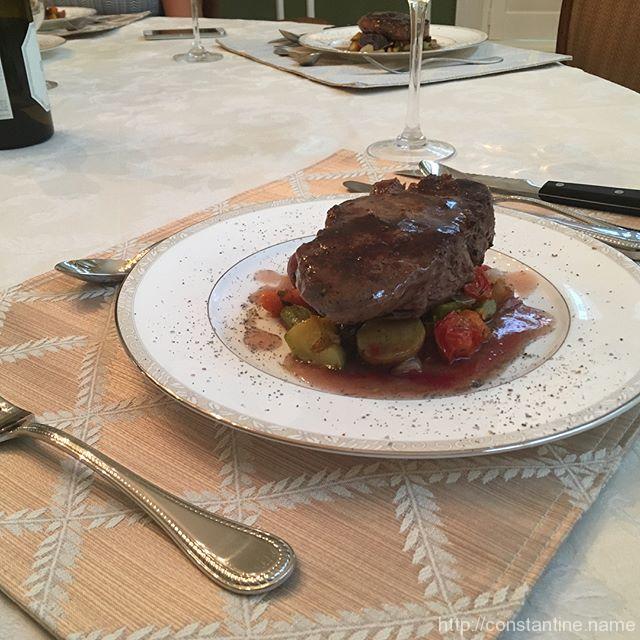
Be sure to swipe right and ZOOM. IN.
ɕ

Meet my great pal Kona! (Also, his human Steve.) Time to pay up for yesterday. run run run run run
ɕ
Only a virtuous people are capable of freedom. As nations become corrupt and vicious, they have more need of masters.
~ Ben Franklin
slip:4a568.
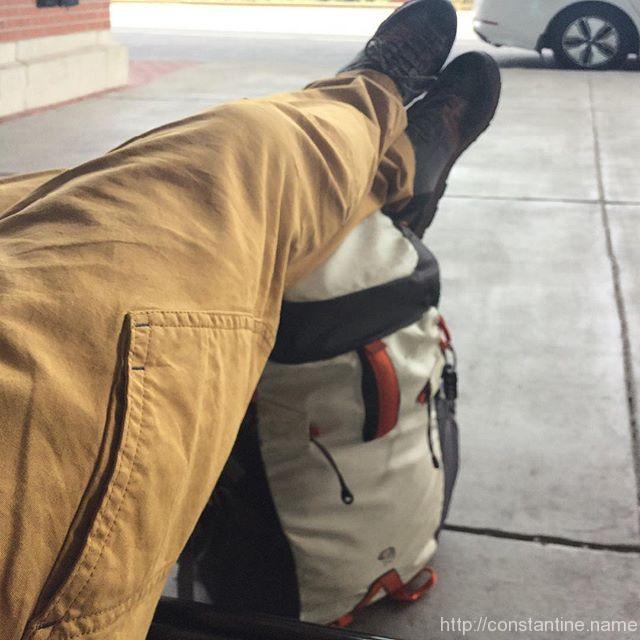
The Puffin doubles as a leg rest when lounging awaiting a ride! Hello Kentucky! I am in you. #whereisthepuffin
ɕ
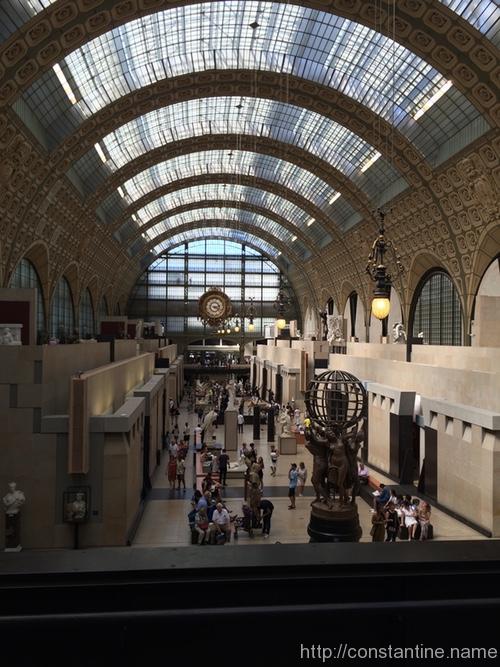
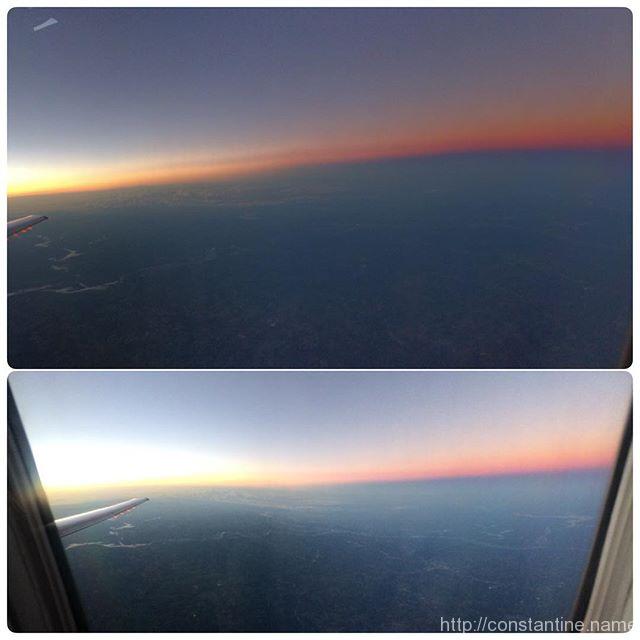
Two pano’s squeezed out the window. Diff exposures, no filters. Some distortion from jet bumps and window etc. Looking south. On far right you can see the ‘wedge’ of the Earth’s shadow projected up onto the lower edge of the sky. On the left you can see the southern side of the sunrise. From this altitude, you clearly get the sense of how this color “show” rotates around that south point in the middle of the photo; Like a two panel beach ball, with these spectacular colors where the two hemispheres meet. Of course, the sky and sun aren’t moving… ;) Flying westward this show lasted so much longer than when you are standing still.
ɕ
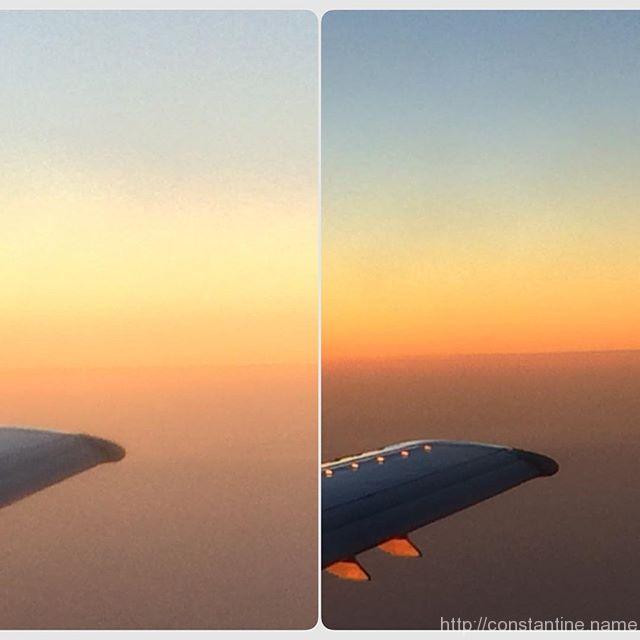
WOW! Westward flight left pre-dawn and I was treated to the most spectacular sunrise and Belt of Venus (wikipedia it!) I have even seen! These are two photos of diff exposures. No filters. I’ve never seen GREEN like this. More to come! Also: GOOD MORNING CHICAGO (just for a layover tho’)
ɕ
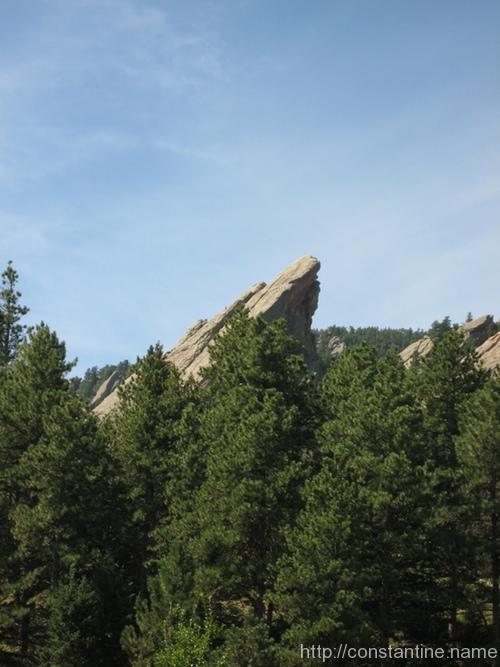
Our climb of the third Flatiron was leisurely enough that we took a lot of photographs. As I’ve been going through them, I’ve carved out a second set of must-see shots.
(There’s also my first Flatiron 3 post about the best beginner climb in the solar system.)
The Flatirons are just smack-dab right next to Boulder. Everywhere you go, the “front range” is just looming to the West. Sitting at Einstein Bro’s Bagels, the slabs of rock beckon tantalizingly close. Flatiron 3 is striking because the backside is exposed too, making the tip of the climb into an impressive prominence. (…and it makes for a wickedly fun, triple-rappel off the back too!)
The approach is simply a beautiful, long, hiking trail. (Or as we took to joking, a trail for the “walkers.”) The lower parts of the trail are heavily trafficked, but the further you go, the more interesting the terrain gets. Eventually, Flatiron 3 starts peeking at you through the trees.
A few shots from the top… just taking in the view!
At the very top, there’s a comfy recess just behind the true summit. Mike got excited at the huge slab with the prominent crack system that is hidden behind the Flatiron. (If he’d had his way, we’d have trekked over there immediately after rappelling off the thing.) There’s also a commemorative plaque set in the rock. Beyond the plaque lie the Rocky Mountains!
After you rappel, you “walk off” down a steep ravine filled with scree, between the 3rd and 2nd Flatirons. If you look closely in the first two photos, you can see “hikers” (or perhaps climbers walking off) on the rock to give you a feel for the scale.
ɕ
They are attempting to right the Costa Concordia today. She’s TWICE as big as the titanic… no one has ever tried to right a ship this large. (…oh, and “parbuckling“.)
ɕ